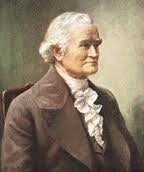A chef is a trained professional cook and tradesman who is proficient in all aspects of food preparation, often focusing on a particular cuisine. The word "chef" is derived from the term chef de cuisine, the director or head of a kitchen. Chefs can receive formal training from an institution, as well as by apprenticing with an experienced chef.
There are different terms that use the word chef in their titles, and deal with specific areas of food preparation. Examples include the sous-chef, who acts as the second-in-command in a kitchen, and the chef de partie, who handles a specific area of production. The kitchen brigade system is a hierarchy found in restaurants and hotels employing extensive staff, many of which use the word "chef" in their titles. Underneath the chefs are the kitchen assistants. A chef's standard uniform includes a hat (called a toque), neckerchief, double-breasted jacket, apron and sturdy shoes (that may include steel or plastic toe-caps).
Various titles, detailed below, are given to those working in a professional kitchen and each can be considered a title for a type of chef. Many of the titles are based on the brigade de cuisine (or brigade system) documented by Auguste Escoffier, while others have a more general meaning depending on the individual kitchen.
Other names include executive chef, chef manager, head chef, and master chef. This person is in charge of all activities related to the kitchen, which usually includes menu creation, management of kitchen staff, ordering and purchasing of inventory, controlling raw material costs and plating design. Chef de cuisine is the traditional French term from which the English word chef is derived. Head chef is often used to designate someone with the same duties as an executive chef, but there is usually someone in charge of a head chef, possibly making the larger executive decisions such as direction of menu, final authority in staff management decisions, and so on.[3] This is often the case for executive chefs with multiple restaurants. Involved in checking the sensory evaluation of dishes after preparation and they are well aware of each sensory property of those specific dishes.
In the UK, the title executive chef normally applies to hotels with multi outlets in the same hotel. Other establishments in the UK tend to use the title head chef.
The sous-chef de cuisine (under-chef of the kitchen) is the second-in-command and direct assistant of the chef de cuisine or head chef. This person may be responsible for scheduling the kitchen staff, or substituting when the head chef is absent. Also, he or she will fill in for or assist a chef de partie (line cook) when needed. This person is accountable for the kitchen's inventory, cleanliness, organization, and the continuing training of its entire staff. A sous-chef's duties can also include carrying out the head chef's directives, conducting line checks, and overseeing the timely rotation of all food products. Smaller operations may not have a sous-chef, while larger operations may have more than one.
A chef de partie, also known as a "station chef" or "line cook", is in charge of a particular area of production. In large kitchens, each chef de partie might have several cooks or assistants. In most kitchens, however, the chef de partie is the only worker in that department. Line cooks are often divided into a hierarchy of their own, starting with "first cook", then "second cook", and so on as needed.
A commis is a basic chef in larger kitchens who works under a chef de partie to learn the station's or range's responsibilities and operation.This may be a chef who has recently completed formal culinary training or is still undergoing training.
Kitchen assistants are of two types, kitchen-hands and stewards/ kitchen porters. Kitchen-hands assist with basic food preparation tasks under the chef's direction. They carry out relatively unskilled tasks such as peeling potatoes and washing salad. Stewards/ kitchen porters are involved in the scullery, washing up and general cleaning duties. In a smaller kitchen, these duties may be incorporated.
A communard is in charge of preparing the meal for the staff during a shift. This meal is often referred to as the staff or family meal.[6]
The escuelerie (from 15th century French and a cognate of the English "scullery"), or the more modern plongeur or dishwasher, is the keeper of dishes, having charge of dishes and keeping the kitchen clean. A common humorous title for this role in some modern kitchens is "chef de plonge" or "head dishwasher".
Education is available from many culinary institutions offering diploma, associate, and bachelor's degree programs in culinary arts. Depending on the level of education, this can take one to four years. An internship is often part of the curriculum. Regardless of the education received, most professional kitchens follow the apprenticeship system, and most new cooks will start at a lower-level 2nd or 1st cook position and work their way up.
The usual formal training period for a chef is two to four years in catering college. They often spend the summer in work placements. In some cases this is modified to 'day-release' courses; a chef will work full-time in a kitchen as an apprentice and then would have allocated days off to attend catering college. These courses can last between one and three years. In the UK, most Chefs are trained in the work place, with most doing a formal NVQ level 2 or 3 in the work place.
Neckties were originally worn to allow for the mopping of sweat from the face, but as this is now against health regulations, they are largely decorative. The chef's neck tie was originally worn on the inside of the jacket to stop sweat running from the face and neck down the body. The jacket is usually white to show off the chef's cleanliness and repel heat, and is double-breasted to prevent serious injuries from burns and scalds. The double breast also serves to conceal stains on the jacket as one side can be rebuttoned over the other, which is common practice.
An apron is worn to just below knee-length, also to assist in the prevention of burns because of spillage. If hot liquid is spilled onto it, the apron can be quickly removed to minimize burns and scalds. Shoes and clogs are hard-wearing and with a steel-top cap to prevent injury from falling objects or knives. According to some hygiene regulations, jewelry is not allowed apart from wedding bands and religious jewelry. If wound dressings are required they should be blue—an unusual colour for foodstuffs—so that they are noticeable if they fall into food. Facial hair and longer hair are often required to be netted, or trimmed, for food safety. Bandages on the hands are usually covered with nylon gloves. Latex is not typically used for food preparation due to latex allergy.
We gave this recipe a little Southwestern flair by adding some Texas-inspired ingredients. Our Lone Star Rice is the perfect change-of-pace side dish to go with any of your favorite main dishes, like chicken or steak.
- 2 tablespoons vegetable oil
- 1 cup long-grain or whole-grain rice, uncooked
- 2 cloves garlic, minced
- 2 1/2 cups beef broth
- 1 teaspoon ground cumin
- 1/2 teaspoon dried oregano
- 1 (16-ounce) can kidney beans, rinsed and drained
- 1/3 cup mild picante sauce
- 1/4 cup sliced scallion
- In a large saucepan over medium heat, heat oil; sauté rice and garlic until rice is slightly browned.
- Add broth, cumin, and oregano and bring to a boil; reduce heat to low, cover, and simmer 20 minutes. Stir in beans and remove from heat.
- Let stand, covered, until liquid is absorbed, about 5 minutes. Stir in picante sauce and scallions and serve.
October is prime time for National Sports Day. That’s why on October 16th, the fans, families, and athletes of all the sports converge to celebrate their favorite athletic events. All disciplines of a sport take the field, from the youngest to the seasoned professional.
While golfers hit the links to get at least nine more holes before the snow flies, hoopsters gear up for the season ahead. The puck hits center ice early in October, while baseball aims for the bleachers and clears the bases.
Football is heating up with tackles, kicks, and offsides. Don’t forget, volleyball digs midseason, too. Runners in most of the country love October. Events like 5k, half, and full marathons throughout the nation feature opportunities to enjoy the fall weather and beautifully changing landscapes. In the Western Hemisphere, families gather to watch soccer’s final kickoff. The intensity builds, and every game ends with memories of wicked kicks or the goalie’s best save.
From a young age, family road trips took many to cheer on siblings in a variety of sports. We hauled our gear from place to place, and the team knew the season was drawing to a close when the duffle bags began to smell.
Gather your friends to enjoy watching your favorite team. Get out and play, too. No matter your skill level, relishing the challenge and physical activity will be worth it.
With all sports, practice is vital. However, time touching the ball under the pressure of competition makes players excel. With the support of great coaches working their magic, these young novices mature into confident players. How exciting to watch their confidence grow.
The Registrar at National Day Calendar® proclaimed National Sports Day in 2019 to be observed on October 16th, annually.
Q. What is the most popular sport in the world?
A. With over 3.5 billion fans worldwide, soccer clearly harnesses the favored sport status. FIFA estimates 265 million play the sport. The sport’s top tournament lasts a month-long every four years and captures an audience of 517 million viewers. In 2018, over 3 million fans attended the tournament, not to mention the billions who watched or listened around the world.
Q. What is the world’s oldest sport?
A. Wrestling earns the title for oldest competitive sport. Evidence of the sport dates back 15,000 years.
Q. What is the oldest team sport?
A. Ulama is not only the oldest team sport, but it is also the oldest known sport to use a ball. The game developed around 3,500 years ago in Central and Southern America.

















No comments:
Post a Comment